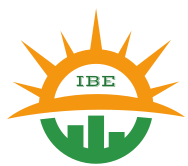IBE™ intends to build on a LIB manufacturing ecosystem in India.
To facilitate the same, IBE offers a non-exclusive license to mass manufacturing of LIB cells in a phased manner using IBE’s indigenous LIB cell chemistry and cell manufacturing know-how, a complete process lines to fabricate cells (Cylindrical (18650, 22700 & 4680), Pouch and Prismatic)
Salient Features of IBE’s LIB formulation
Our LIB formulation is robust and uses aqueous binder slurry technology with CMC/SBR. IBE formulation offers a range of flexibility. Our licensing includes both PVDF/NMP formulation as well (DUAL BINDER Formulation). Our CMC drying process is versatile and quick, yielding excellent carbon credit to the manufacturers. No solvent extraction steps are required and/or recycling as it happens for NMP recovery in conventional/Standard LIB cathode formulations.
Our Electrolyte additives are proprietary and serve its important role in cell safety predominantly. IBE can offer formulations that suit different end-user applications.
Our advanced chemistry provides >2000 Cycles at 0.5C Charge/Discharge pattern with >80% Cell capacity retention.
Our Advanced chemistry formulations include but not limited to:
- Advanced NMC chemistry in which Cathode power consisted of single-crystal NMCxyz powders having larger grain size.
- Standard Polycrystalline secondary particles of NMCxyz for low-cost cells
- Advanced composite Polycrystalline secondary particles of NMCxyz+ (IBE nomenclature) for low-cost cells
- The anode is AG or MCMB powders
- IBE’s Electrolyte blend is robust and proprietary.
- We use a Commercial PP/PE separator of specific thickness.
- Measuring an internal impedance of tens of mΩ (Measured at 1kHz)
Note: Our slurry formulation is unique and versatile to replace any cathode materials (other than NMC811) such as NCP, NMC89, LFP, LCO, and LMN
Our Expertise:
-
Significant Experience in cell design & development
-
Development & optimisation of cell chemistry (cathode materials, anode materials).
-
In-depth knowledge of Li-ion battery cell operation, performance and failure modes.
-
Experience in different physical and chemical characterisation tools for AAM and CAM powders, fabricated electrode, and various types of prototype cells.
-
Unique Slurry powder mixing sequence
-
Slurry viscosity optimisation (visco-elastic properties and pH) and resistivity of the slurry
-
Electrode coating and drying sequence for AAM and CAM
What we could offer to Cell manufacturing industry as part of complete Industrialisation drive:
- Qualify anode materials, cathode materials, electrolyte materials, cell components, Separator grade, new electrode compositions in cylindrical, pouch and prismatic cells.
- Optimize the electrode composition, electrode processing, cell assembly processes and cell design parameters to improve the electrochemical and life cycle performances.
- Define specifications for materials, slurry formulations, electrodes, cell subassemblies and final cell. Write DFMEA.
- Define cell design and electrical metrics to meet specific application requirements.
- Define and carry out DVP&R for material and cell qualification.
- Safety Handling as per MSDS
- Support the manufacturing team in the definition of manufacturing procedures.
- Conduct design reviews and, after successful validation, release the design to B or C sample stage.
- Failure Analysis in Lithium-Ion Battery Production with FMEA-Based Large-Scale Bayesian Network
- Determine failure modes and reports are prepared.
- Develop and improve the documentation system and change control and process management procedures.
Salient features of IBE’s Supercapacitor formulation:
- Our proprietary SC formulation is state-of-the-art having unique process steps that use superconductive carbon additives with CMC aqueous binder facilitating a quick drying process.
- Our SC chemistry provides Low ESR (as low as 48 mΩ) Supercapacitors with a rated voltage of 2.5-2.7V per cell.
- The capacitors can be assembled in mF to Several 1000 farads
- Any form-factor can be used.
- We use a very thin (thickness is a trade secret) proprietary separator.
- Our chosen porous carbon is unique with a high surface area (m2/g)
- Uses a special electrolyte blend with an antigas feature having an ionic conductivity in the range 60-65mS/cm.

